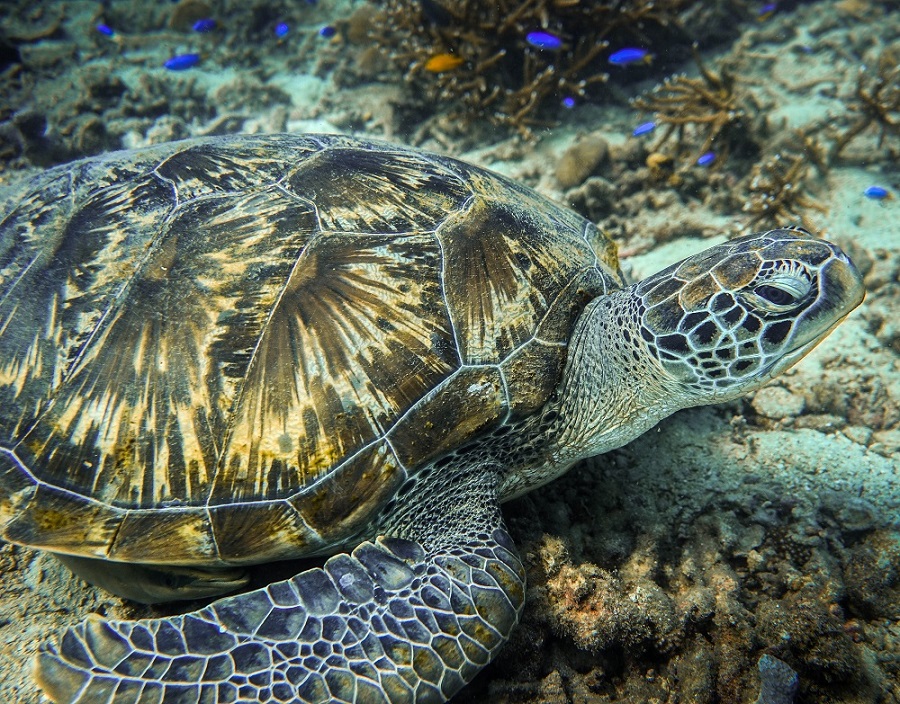
Sea turtles are one of the most fascinating animals that live in the ocean. They symbolize calm, peace, wisdom, and good fortune because of their long life span and underwater behavior. Aside from that, they make a significant contribution to the ocean and have an impact on other marine life.
Sea turtles still hold a lot of mysteries to this day, but so far, here are some of the most interesting facts known about them:
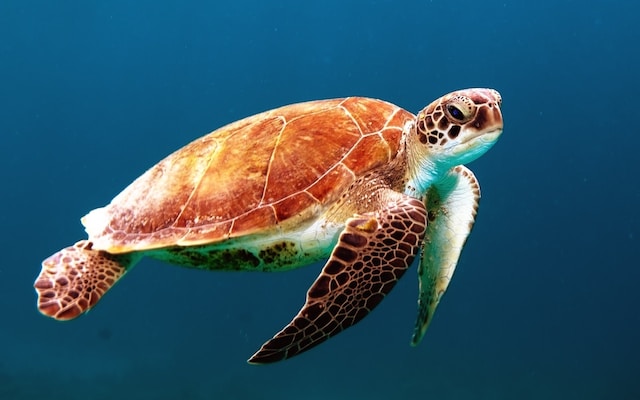
1. The average lifespan of a sea turtle is about the same as that of a human.
Sea turtles have a lifespan. They start to mature and reproduce when they reach between 20 and 30 years old.
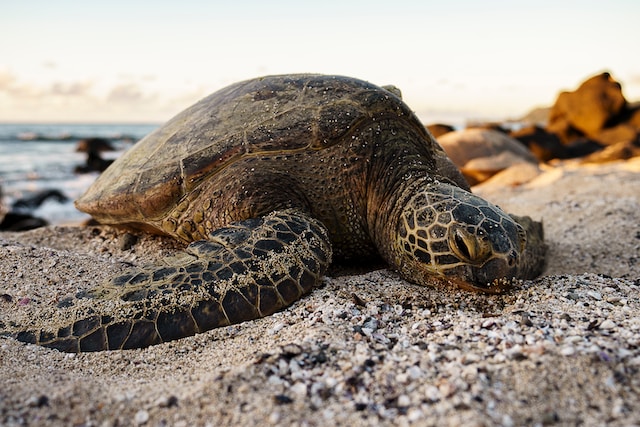
2. They appear to be crying when they are on land.
They look like they are crying when you see them on land, but they’re not. They only excrete excess salt through their eyes after consuming salt water.
3. There are seven species of sea turtles.
There are seven species of sea turtles: Hawksbill, Loggerhead, Leatherback, Olive Ridley, Flatback, Kemp’s Ridley, and the most common type, Green Sea Turtles. They can be found worldwide, except in the Arctic and Antarctic.
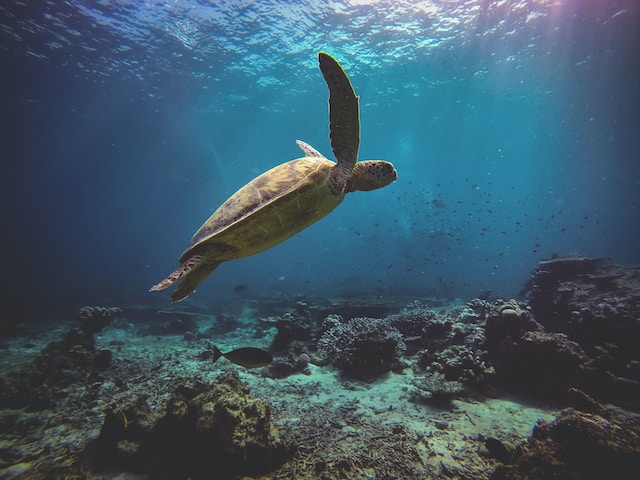
4. Sea turtles don’t go into their shells to hide.
Unlike turtles that live on land, a sea turtle can’t retract its head and flippers inside its shell. This is why they are so vulnerable to predators and other threats.
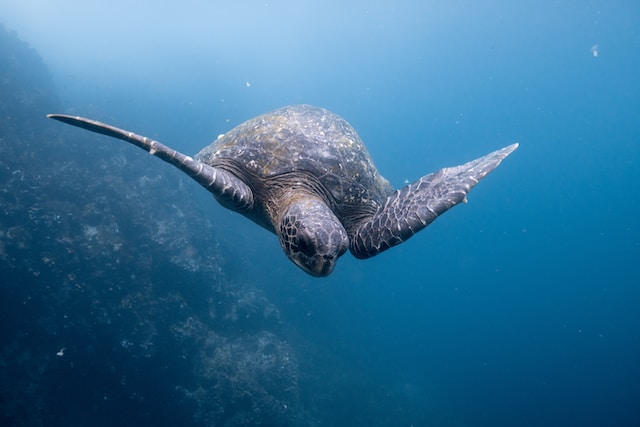
5. The heaviest sea turtle ever found weighed 900 kilograms!
In 1988, a Welsh farmer found what he called a “monster on the beach” and reported it to the authorities. It was a leatherback turtle, approximately 100 years old. It was already dead when it washed up on the beach, and it is believed that it drowned after getting caught in a fishing net. Its body is now preserved and displayed in the National Museum Cardiff.
6. Like humans, sea turtles cannot breathe underwater and need air to survive.
Sea turtles are marine reptiles. They are capable of adapting to both land and water. They can only lay eggs on land, and they need air to breathe, but the majority of their lives are spent underwater.
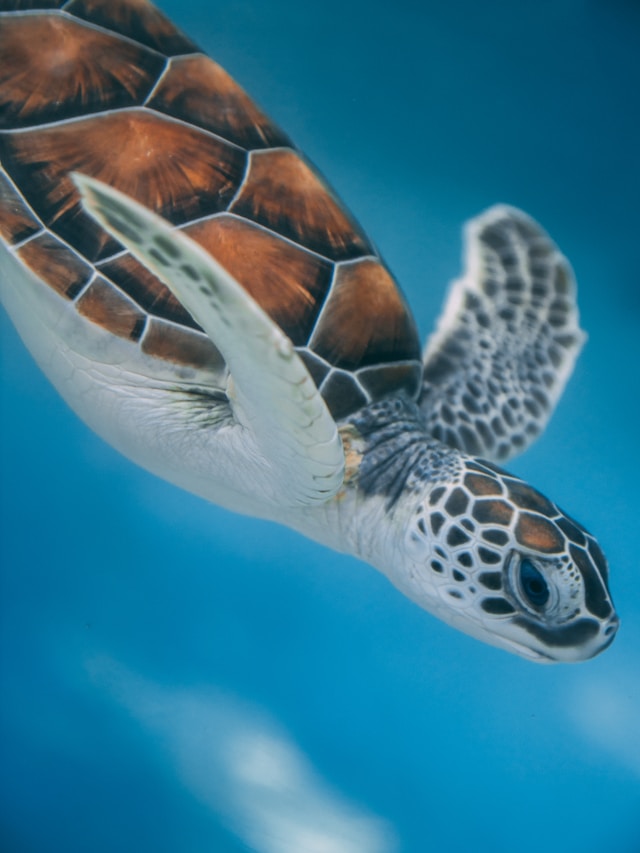
7. They can hold their breath for up to 10 hours.
Sea turtles have the ability to stay underwater for several hours, depending on their activity. If they are active, they can hold their breath for 5 to 10 minutes. However, when they are resting or sleeping, they can hold their breath for several hours. They can slow their heartbeats to once every nine minutes in order to conserve oxygen in their bodies.
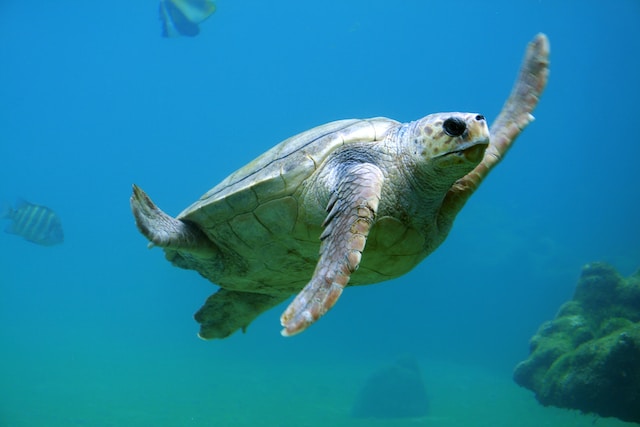
8. Sea turtles are natural navigators.
Female sea turtles travel back faithfully to the beach where they were born to lay their own eggs. They navigate their way through the use of their sensitivity to Earth’s magnetic field.
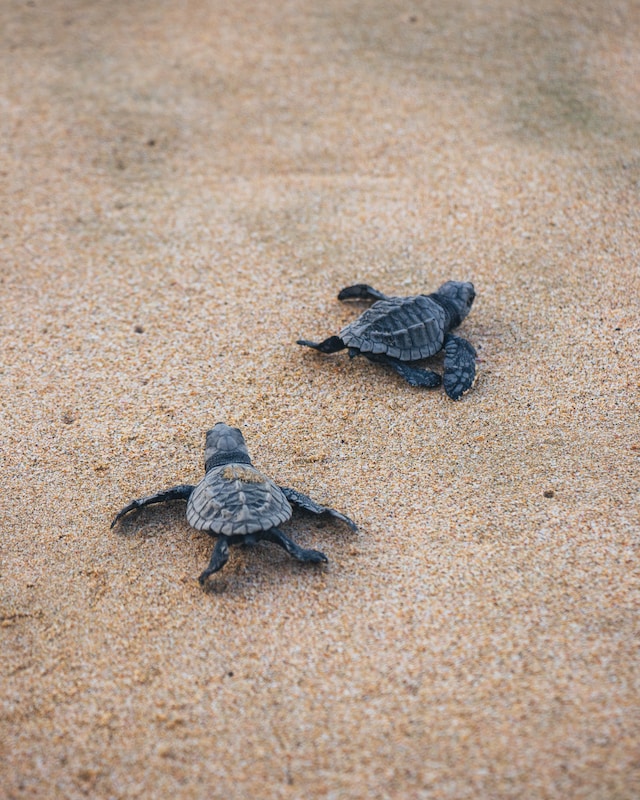
9. The temperature of the sand in the nesting area determines the egg’s gender.
The temperature of developing eggs determines whether the offspring is male or female. A cold temperature produces males, while a hot temperature produces females.

10. Sea turtles never see their parents.
Once a female leaves her nest, she never returns to take care of it again. When the eggs hatch, the hatchlings all make their way to the ocean without ever finding their parents.

11. They migrate hundreds or even thousands of miles.
Sea turtles migrate for food, living conditions, and safety. When it is nesting season, they travel again to where they were born. Visit the Sea Turtle Conservancy website to check out the list of active sea turtles!
12. Sea turtles are already threatened and endangered.
They are now struggling to survive because of human activities, pollution, and climate change.
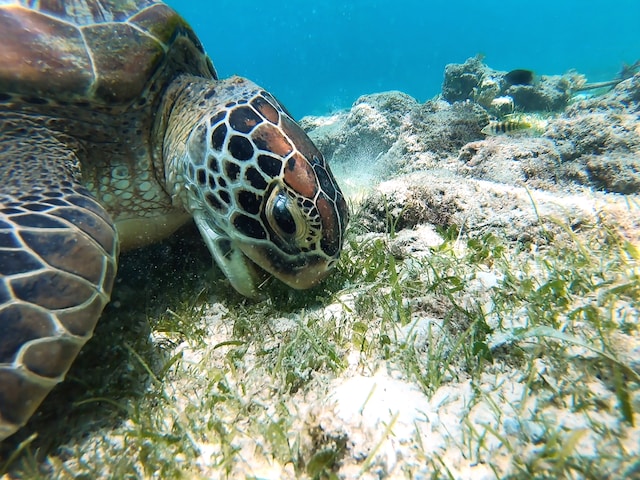
Human activities like illegal trade and too much commercial fishing are the main reasons for the sudden rise in sea turtle deaths. They are hunted and sold for their meat, skin, and shells for different reasons.
Sea turtles can also die from drowning when caught in a fishing net. They can’t slow down their heart rate when stressed, so they can’t stay underwater for long.
Oil spills and human garbage, which are very harmful to them, already pollute some parts of their habitat. Sea turtles that eat jellyfish may ingest plastic by mistake because they confuse it with jellyfish.
Destruction, disturbances, and other obstacles in their nesting area also decrease the survival rate of the eggs and hatchlings.
The sudden temperature rise caused by climate change may also mean that more female sea turtles will be produced in the future, resulting in a male shortage. This phenomenon could indicate that reproduction will be reduced, eventually leading to extinction.
According to research, some species of sea turtles will be extinct by 2050. In the future, when the last living sea turtle dies, we will no longer be graced by this beautiful creature.

13. Conservation Efforts to Protect Sea Turtles:
Despite being around for millions of years, sea turtles are in danger and threatened. Everyone is responsible, and these are the efforts made to protect sea turtles and create a better environment for them:
◉ Do not throw garbage into the ocean.
◉ Enforce laws to eradicate dumping pollutants in sea waters.
◉ Raising awareness about illegal trade and enforcing laws to prevent them.
◉ Increase public awareness and community involvement.
◉ Educating people, tourists or not, on how to avoid disrupting the nesting places on the beach and how to protect them.
◉ Regulate the fishing industry.
◉ Collaboration with conservation groups and government agencies.
These efforts should not be left unchecked because sea turtles are an integral part of the ocean. Despite the many challenges, conservationists remain optimistic about increasing the survival of sea turtles.
Although it may be challenging to prevent sea turtle deaths caused by factors beyond human control, there are many things everyone can do to help these endangered animals thrive in the future. Whatever small contributions we can make will collectively have a significant impact.
